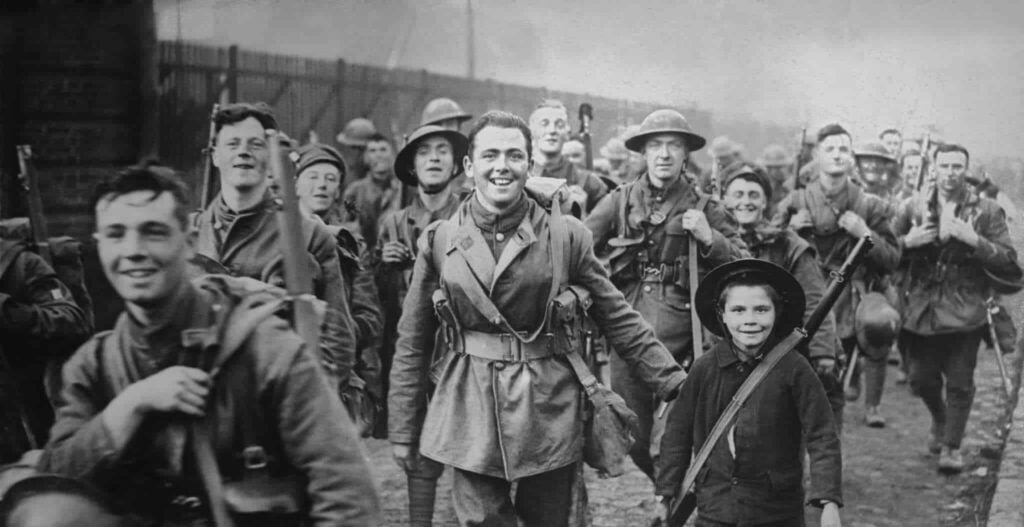The Great War, also known as World War I, began in 1914 and lasted until 1918. Millions of families were recorded to have sent their family members to fight in the war, and many of them failed to return, except those from Thankful Villages. What were Thankful Villages?
Thankful Villages, also called Blessed Villages, refer to the counties where everyone returned to their families after WWI. There were around 32 soldiers who returned safely to their villages.
The Origin of Thankful Villages
The British historian and journalist Arthur Mee coined the term Thankful Villages in 1936 in his book Enchanted Land. It was part of his history book series, The King’s England, with forty-three volumes.
Although Mee initially estimated thirty-two Thankful Villages out of 1,600 villages in England, only twenty-four were identified. It was a celebratory time after the infamous World War One that those residents who enlisted during the war came home safely, although one of them lost one of his arms. (Source: Historic UK)
Who is Arthur Mee?
Born by the name of Arthur Henry Mee on July 21, 1875. He was well known during his time for authoring children’s books and self-improvement. Mee was a self-made man, an author, journalist, historian, editor, and writer. (Source: DBPedia)
He was born in a working-class family from Stapleford to his father, Henry Mee, a mechanical engineer, and mother, Mary. Mee worked his way to journalism through his first stint as a copy-holder for the Nottingham Evening Post in 1889. After some years of working, he moved to London, where he continued working in one of the newspapers and had a side hustle of freelancing.
He met and married his wife, Amy Fratson, in London, and they had a daughter, Marjorie, born in 1901. Marjorie was Mee’s inspiration for writing the Children’s Encyclopedia, which led to more books he wrote like Children’s Bible, books of travels around England and Europe, Children’s Shakespeare, and also authored the Children’s Newspaper, where he was nominated as a journalist in chief to British youth. (Source: Stapleford Nottinghamshire)
How Did The Soldiers From Thankful Villages Feel After Returning Home?
Coming home from the Great War was a huge success and celebration for surviving the battles. But this victorious moment was not celebrated by many.
With several countries being surrounded by grief with the loss of their family members, friends, and fellow citizens, survivors from the thankful villages, on the other hand, were not feeling triumphant at all. There was a shame that clouded their feelings.
It was said that with the numerous deaths and losses, some even went missing, and many had not come home to their families; it was as if the thankful villages did not participate in the sacrifice, and they felt shameful for decades. (Source: BBC News)
The Death Toll of WWI
According to multiple sources, there were over sixteen million soldiers who died during this time. Fighting was not the only cause of death. Civilians died because of disease, infection, the fast spread of the Spanish Flu, and malnutrition caused by food shortages due to trade disruption. Some went missing and were eventually presumed dead.
Although it is difficult to determine the exact number of civilian casualties, there were around two million people who passed away because of illness and around six million that went missing. (Source: History On The Net)
